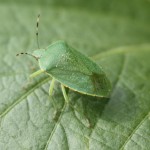As reported by NASS on August 1, 2011
CROPS REMAIN IN MOSTLY GOOD-TO-EXCELLENT CONDITION
The corn, cotton, soybean, and tobacco crops in Tennessee remain in mostly good-to-excellent condition in spite of the excessive heat and spotty rainfall. Some early planted corn acres are maturing rapidly, but overall the crop is progressing at a near normal rate. Soybeans are setting pods at a pace about a week behind the five-year average and are in need of moisture. Cotton is setting bolls at a pace also one week behind the five-year average. Continue reading


